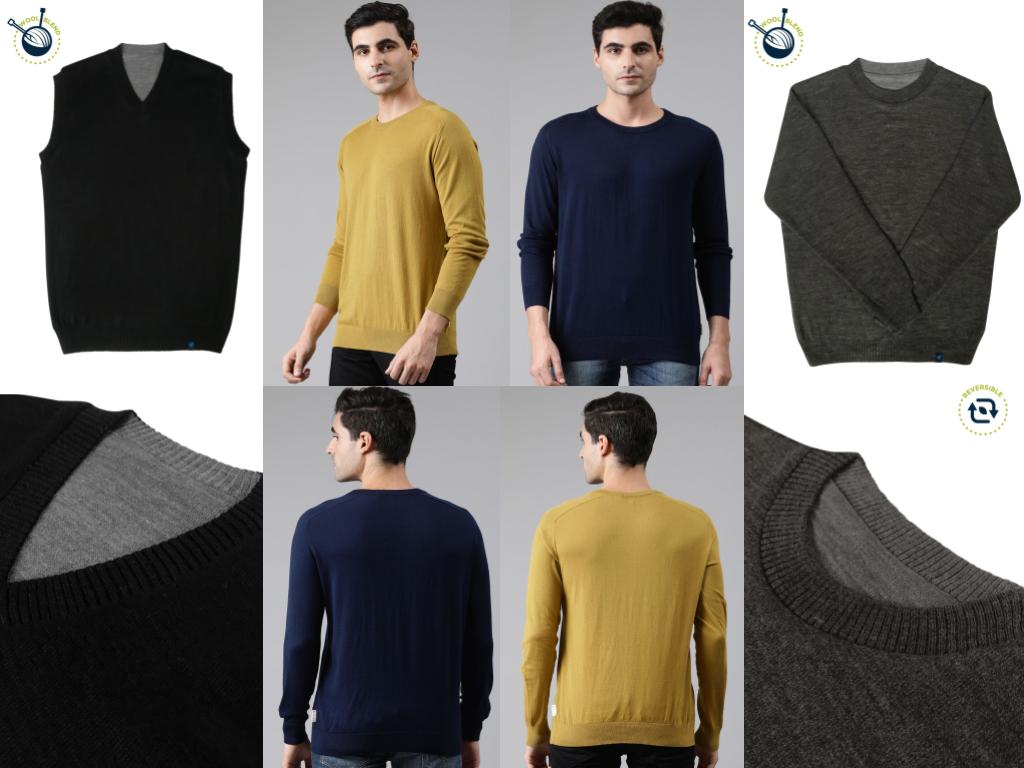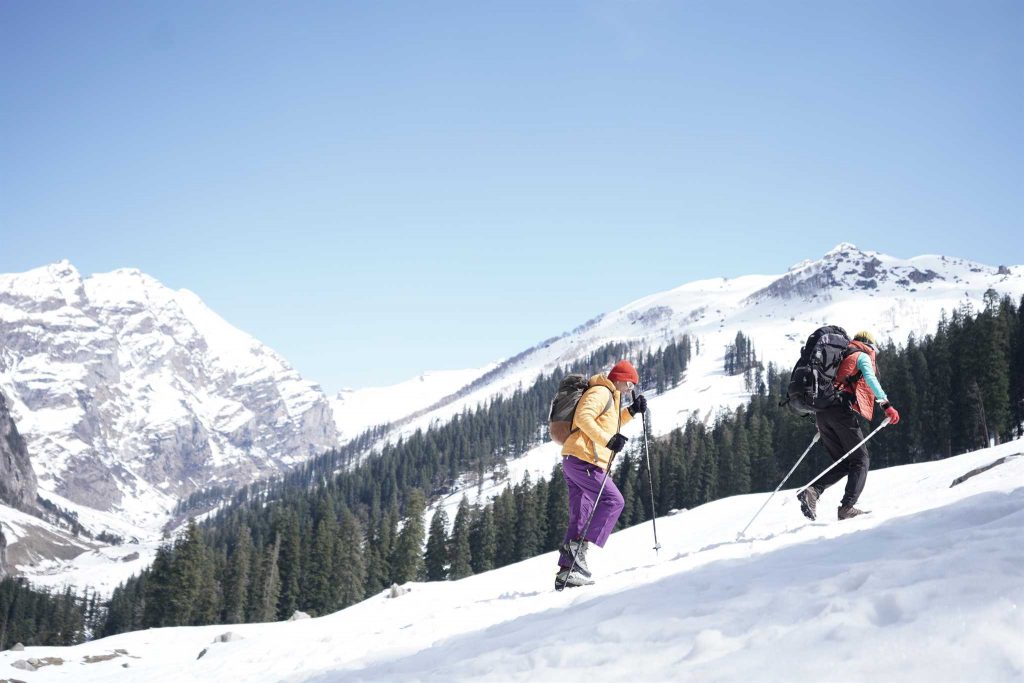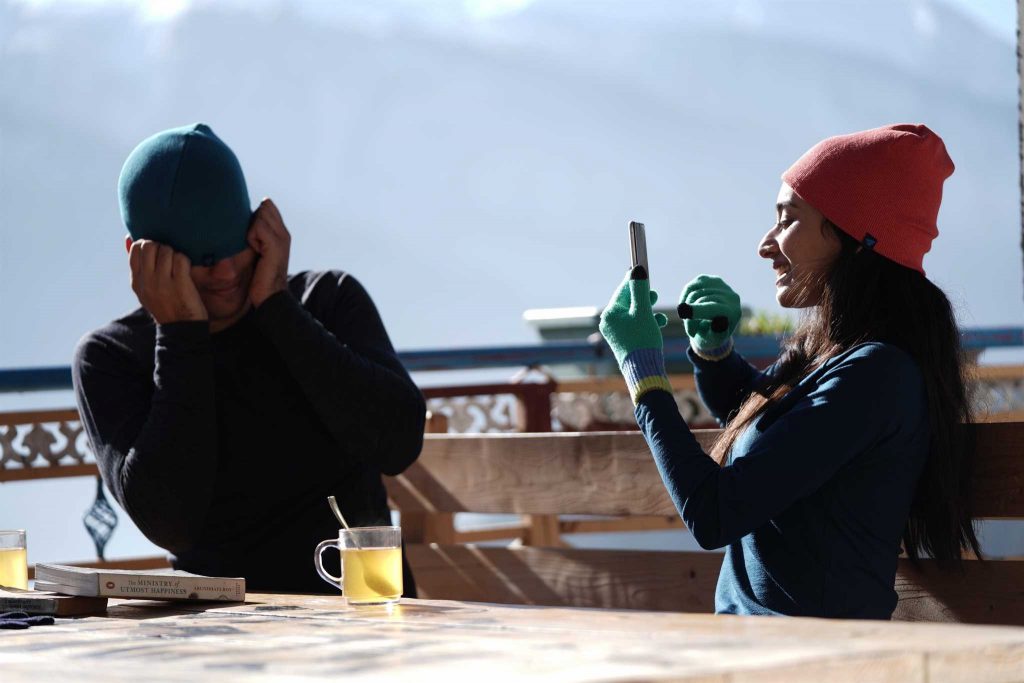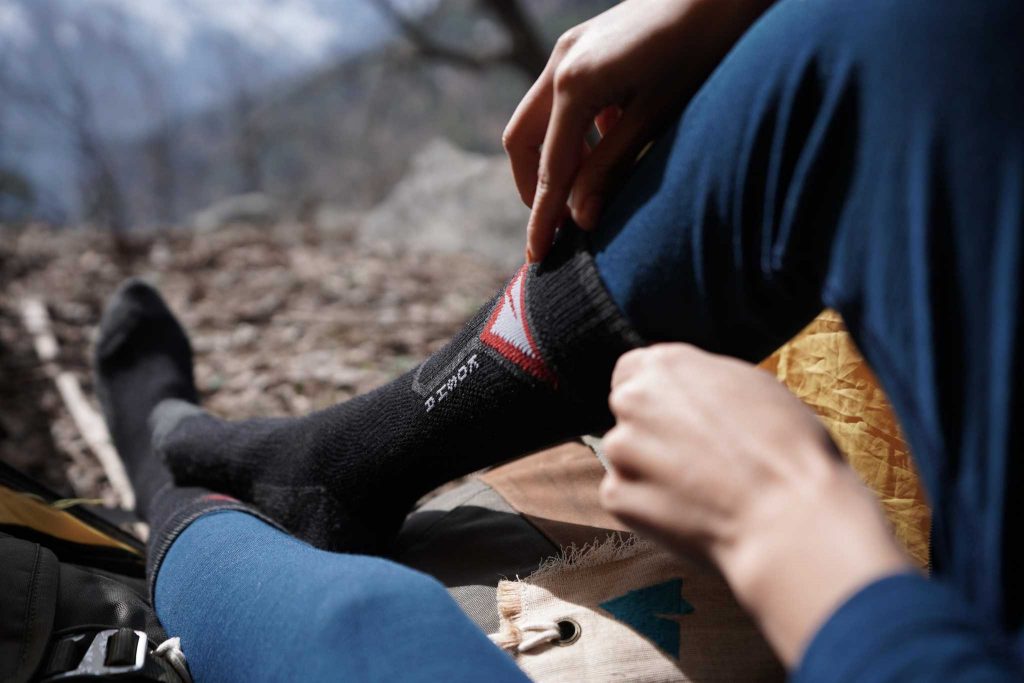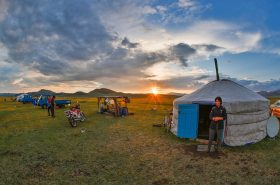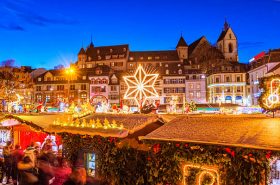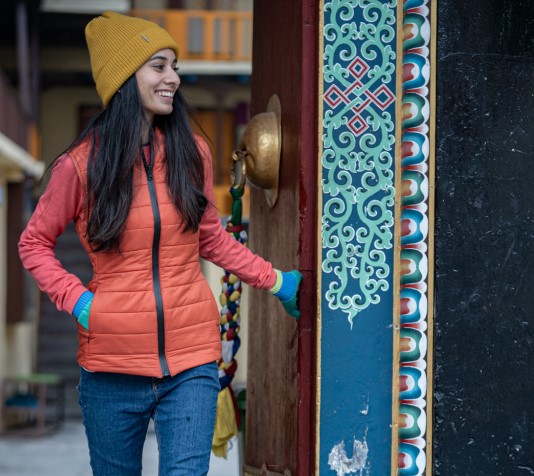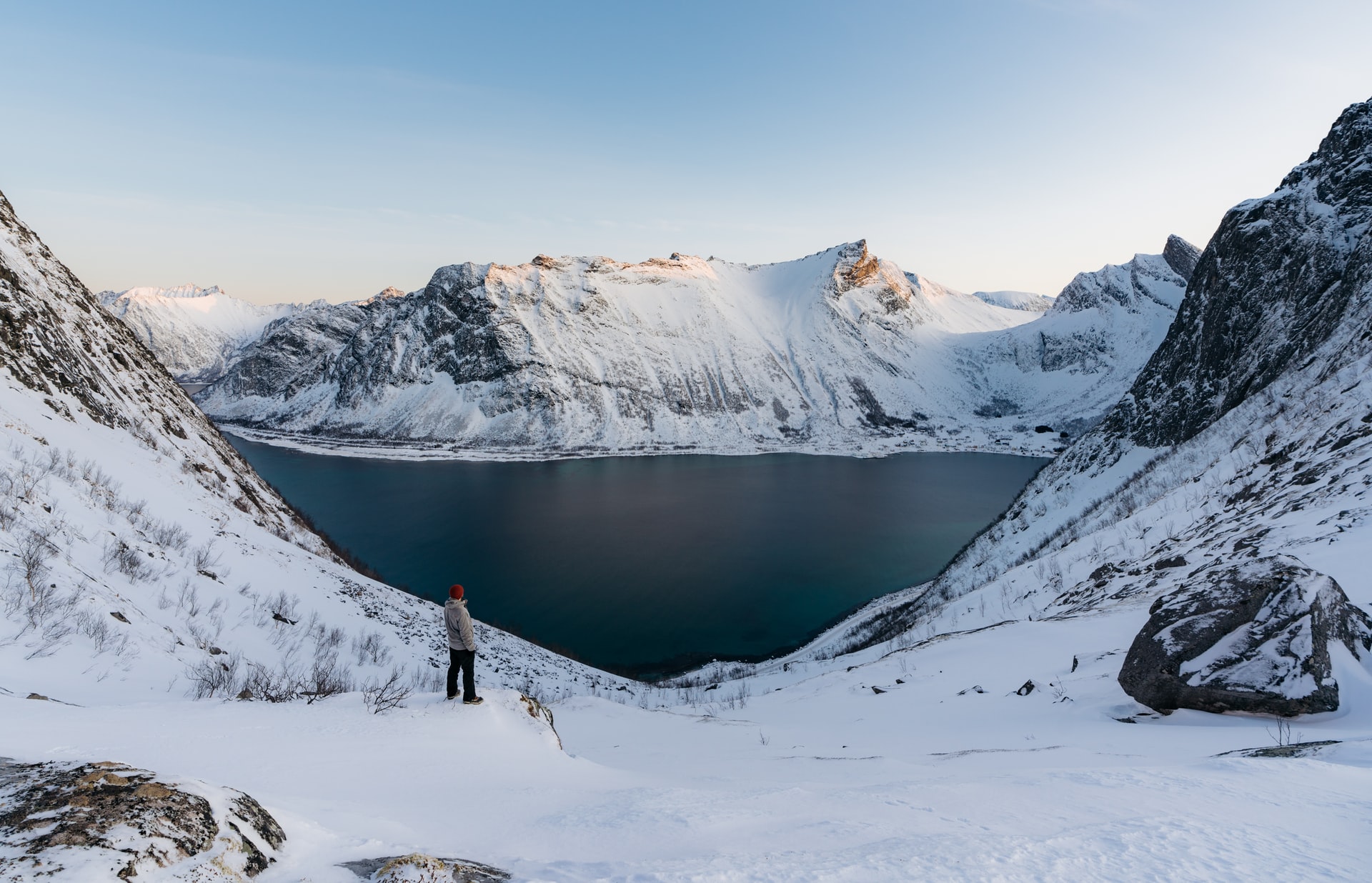
Wondering what to wear in Norway in winter? Keep reading as we share all the cool tips and clothing ideas for you to stay warm!
Norway, also known as the Kingdom of Norway, is a name that suits its dreamy aesthetics! Do you know this place due to the Northern lights? Or perhaps you too know it as the home country of Nobert the Norwegian Ridgeback from Harry Potter?
Moving on…. Norway is a Nordic country belonging to northern Europe. Five main countries come under the cluster of being called ‘Nordic’ – Finland, Norway, Iceland, Sweden, and Denmark.
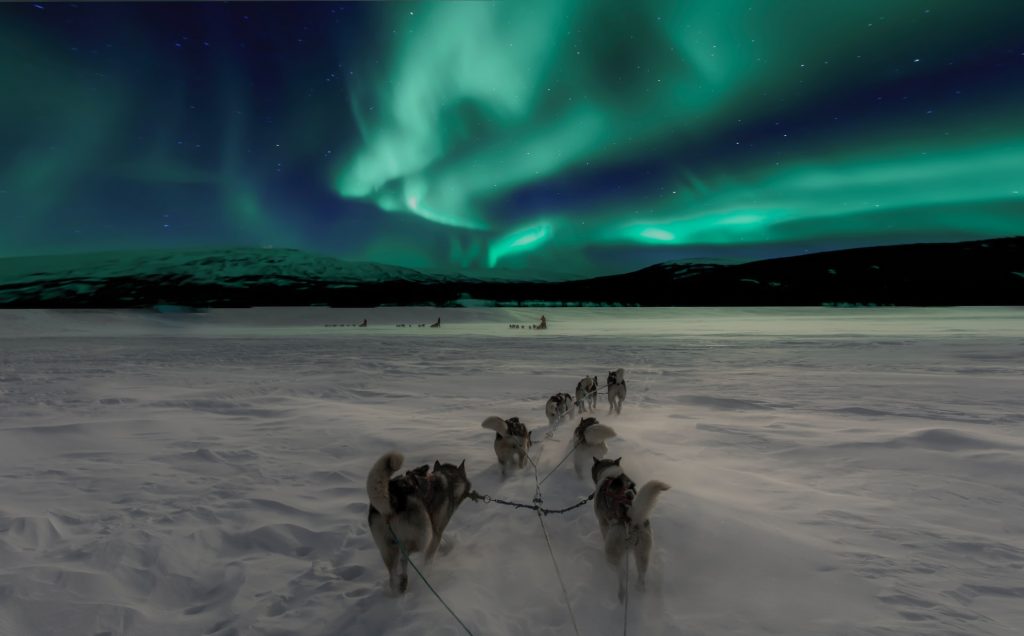
Northern Lights in Norway in winter
While being so far up north and geographically distant from other countries, it is natural that the question of ‘What to wear in Norway in winter’ or ‘Norway winter clothing’ would arise. Don’t worry, we have got you. This is where you leave everything you’re working on and plan a winter trip to Norway! Read on to know all about winter travel to this country!
Table of Contents
What to wear in Norway in winter: Norway Winter Packing List
Where is Norway located?
Norway’s mainland area comprises the western and northernmost portion of the Scandinavian peninsula. This Nordic country shares its land borders mainly with Sweden to its east.
It is further bordered by Russia and Finland to the northeast. The city of Bergen is the unofficial capital of western Norway whereas Oslo; apart from being the most populous city of Norway, is the official capital of the country.
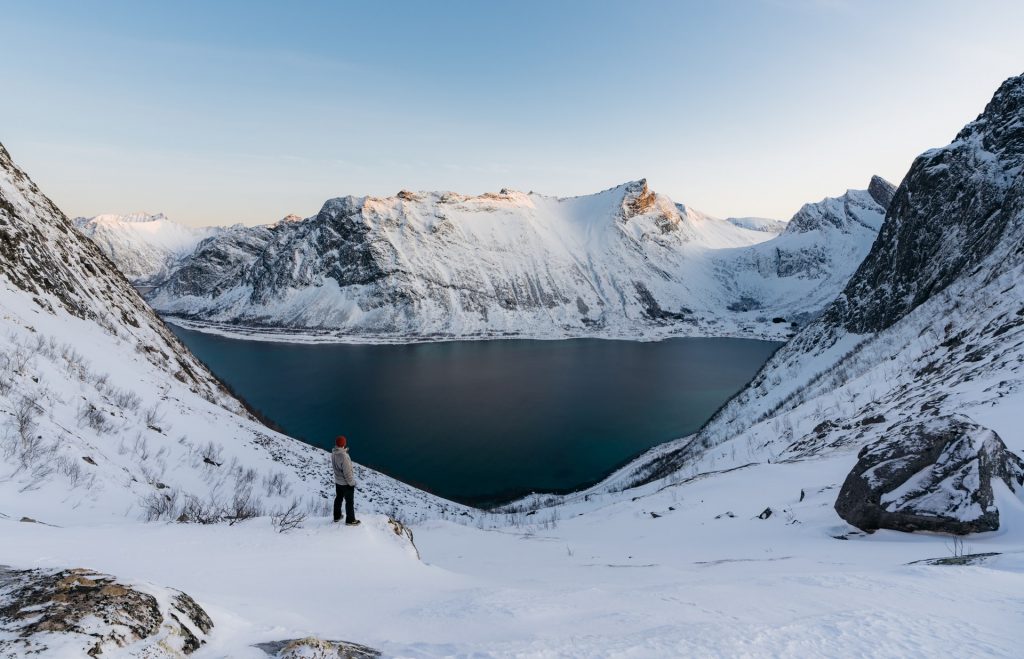
Norway winter views
Similar to Finland, Norway’s seasons vary considerably throughout the country and depend upon whether you will be above treeline or below the tree line. The four common seasons experienced are spring, summer, autumn and winter.
Spring– Norway experiences spring from mid-March to the end of May. The weather is generally pleasant. This season generally coincides with the Easter holidays making it a peak time for visitors. The months of April and May are very popular for skiing.
Summer– Norway welcomes summer from June to August. In the southern part of the country, the average temperatures often reach 20 degrees Celsius to 30 degrees Celsius. The northern mountain area is dramatically different with temperatures below 0 degrees Celsius. One can also experience rains, snow and hail during summertime.
Autumn– The period from September to November comes under the autumn season. The coastal area is comparatively warmer than the land region. Autumn brings out Norway in all its glory with clear skies, golden leaves and pleasant weather however as this season precedes winter, the days in autumn begin to become noticeably shorter.
Winter– Winter is experienced in months from November to January. The first half of winter (till about mid-January) is not a very aggregable time to visit Norway. Depending upon the exact place of a visit, the winter experience can further be understood better.The period of October to March is the best time to see the Northern Lights.
Average winter temperatures in Norway
The winter in Norway is broadly from the end of October till the first few weeks of March. The shortening days of late October pave the way for the upcoming winter. You can expect only 6-8 hours of daylight during winters.
The weather conditions can be described as unstable with occasional snowstorms, severe frost, and very strong winds. Due to the proximity to the sea, coastal Norway has a less extreme winter with an average temperature of about 0 degrees celsius.
During winter, the average temperature across the country comes to around -6.8 degrees celsius. However, also consider the wind chill factor. It is quite a common phenomenon in Nordic countries.
The wind chill is when the temperature seems to be far lower than it is. This is felt due to the extremely chilly winds that are present during Norwegian winters. Taking the wind chill factor into account, make sure you pack for temperatures lower than the ones mentioned.
Norway in winter activities guide – from skiing to Northern Lights Tours
A place that has been on the bucket list of many, has plenty of areas that are worth visiting! (in addition to the famous Northern Lights). For all the lovers of history- As of 2017, Norway has UNESCO’s 8 World Heritage Sites. Seven of these are cultural whereas one is natural.
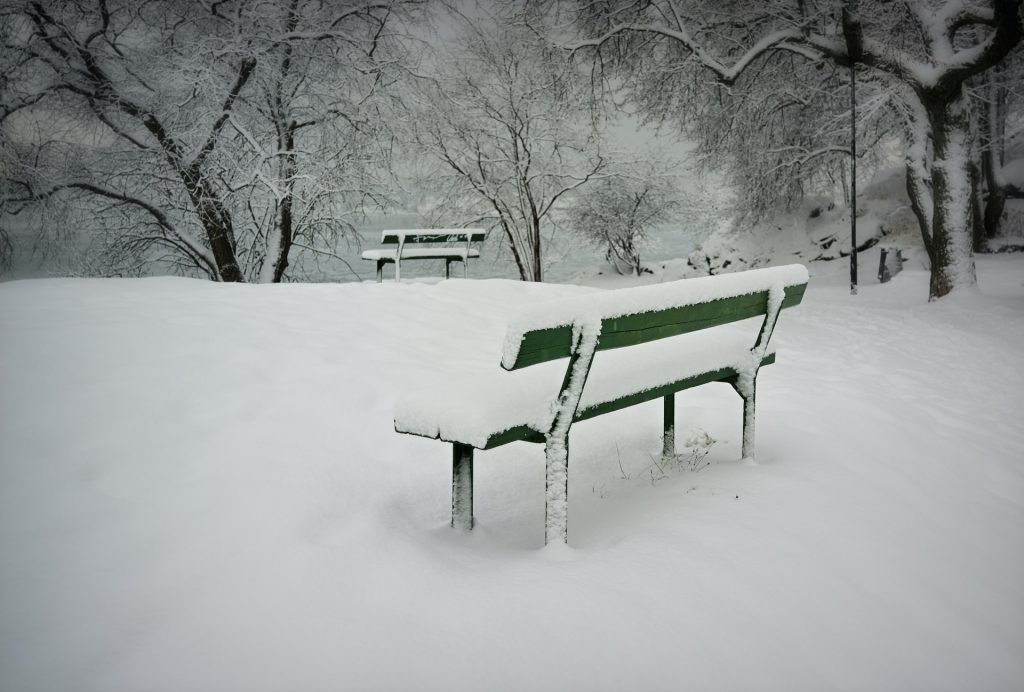
Visiting Norway in winter – Travel Tips
Norway doesn’t disappoint the adventure junkies as it offers several skiing activities. There are even custom skiing packages made by combining various snow-related sports. The mountains of eastern Norway are the optimum place to tour the country with its cross-country skiing.
Dog sledding is also a very popular activity that many look forward to experiencing. In the past, Dog Sledding was the main form of transportation in the snowy hills of Norway. There are various places that offer ethical dog sledding for tourists. It is key that people make sure they are prepared for this adrenaline-inducing activity. In order to make the most of dog sledding, carry the required winter wear and accessories.
The wildlife in Norway is really very rich. The country has polar bears, reindeers, moose and various unique species of birds. Annually some gigantic whales visit the Norwegian coast attracting many tourists as well as locals.
The Vesteralen coast usually sees the sperm whale but can also be a great place to see other species like minke whales, humpbacks, pilot whales, killer whales as well as dolphins! Whale watching in Norway is a treat to the eyes and should definitely be included in your Norwegian bucket list!
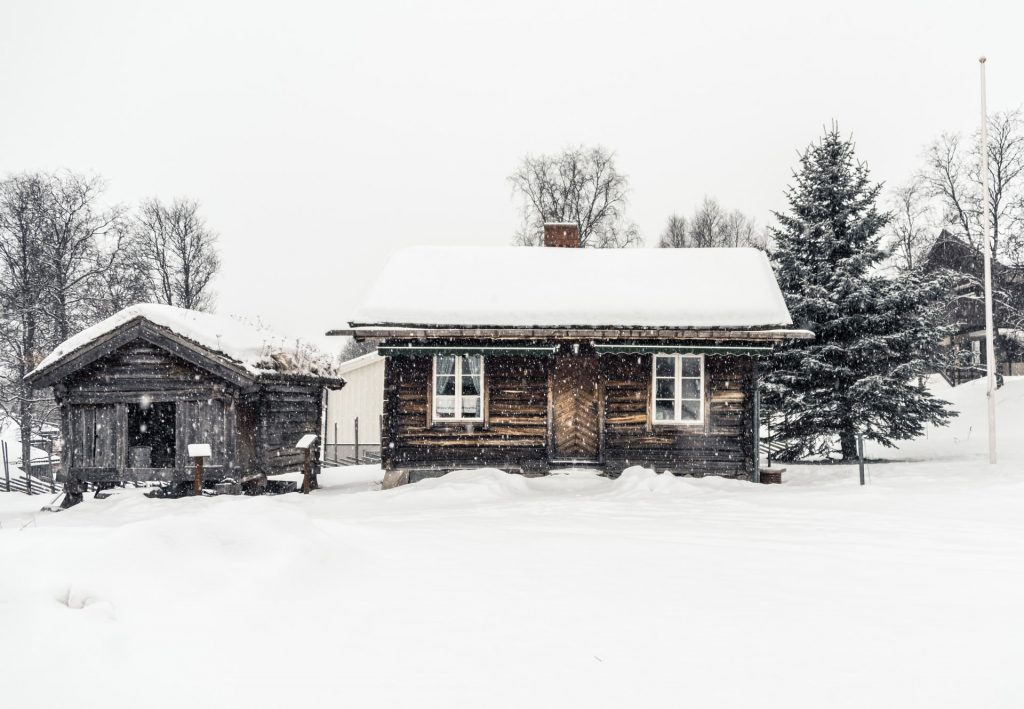
Winters in Norway
Do try to visit Norway during Christmas! It is celebrated during Christmas eve and is called ‘Julaften’. This festival is celebrated by lots of family time in addition to the food and dancing! It might surprise many that Norway doesn’t have a Santa Claus. Instead, someone called Jullenissen distributes the gifts among people.
Coming to the Northern Lights, Tromso is the best place to see nature’s spectacular light show! From the end of September to the end of March is the time when these lights bless the skies of northern Norway. Every year many tourists visit the country to watch the Aurora Borealis. This, however, is an old phenomenon that has been the inspiration to various magical tales and fables.
One can see the same Aurora Borealis in North Norway either from the archipelago of Lofoten Islands and from the city of Tromsø which is located on the island of Tromsoya.
In order to get great pictures, make sure that you too are prepared for the Tromso winter.
If you visit the place during late November or early December, the country gets about 1 hour of daylight every day. In addition to the Aurora Borealis, there are a number of cafes, restaurants, concerts, and festivals to keep you occupied.
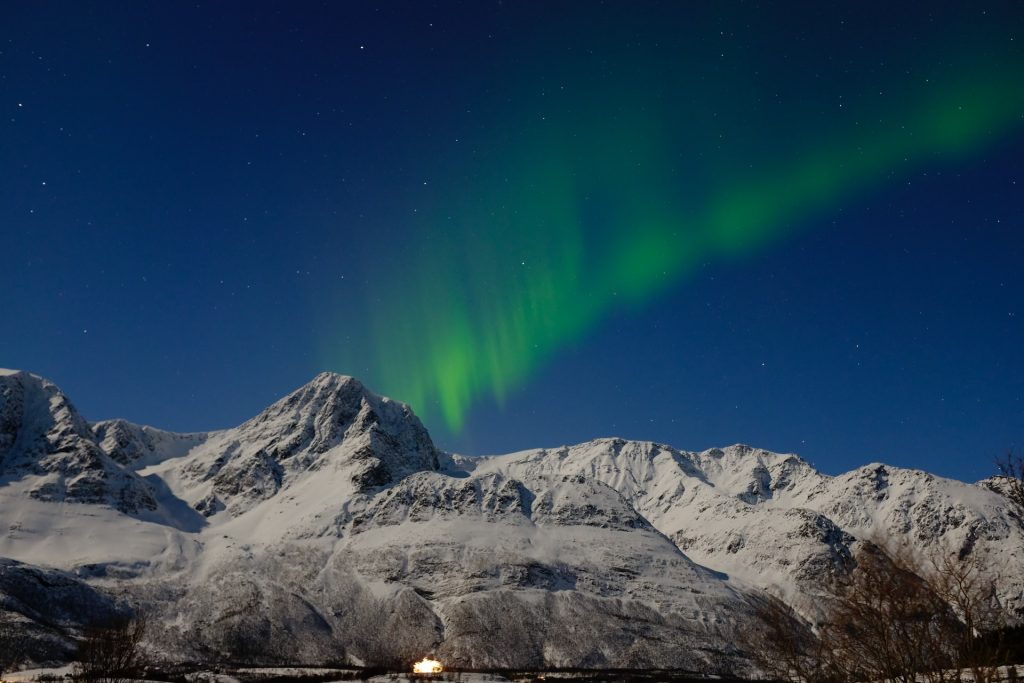
Chasing Northern Lights in Norway
Be it the city of Tromso or the Lofoten islands, the breathtaking Northern Lights will definitely steal the show! All the mentioned things are outdoor activities that need proper thermal wear. Make sure your winter clothing is as stylish as it is effective!
Norway Winter Packing List
Outerwear like puffer jackets and parkas
Visiting a country that is as cold as Norway; that too in winter is a task in itself. In order to have the best winter experience, the visitor must take into account the seasons and conditions of the country before starting with the winter packing.
Norway’s average winter temperature is as low as – 7 degrees Celsius. In case of such cold weather, a heavy insulation providing material should be used. Kosha’s puffer jackets and parka jackets are just that. Kosha’s winter wear collection has different forms of winter apparel.
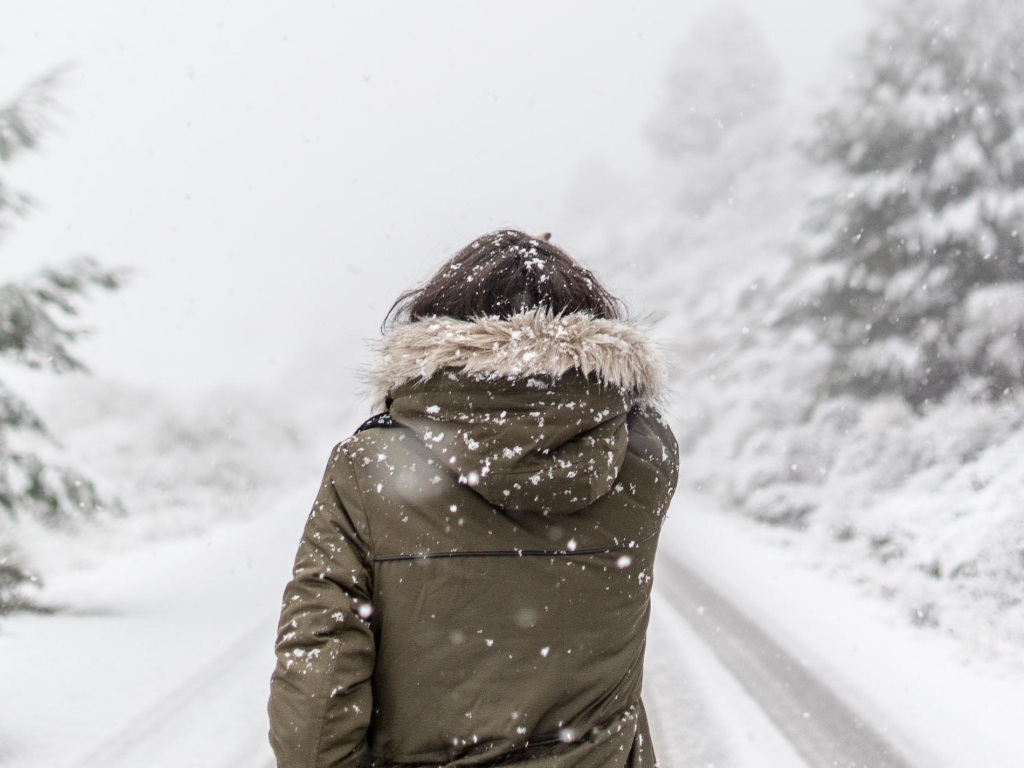
Norway Winter Clothing – Outerwear
Puffer jacket, fleece-lined puffer jacket and water-resistant parka jackets provide maximum warmth. They can be used in a temperature range of 10 degrees Celsius to 5 degrees Celsius. They can be worn in lower temperatures from 5 degrees Celsius to -20 degrees Celsius with proper base layers.
The key difference to be considered while choosing between a puffer and a parka would be their length. Kosha’s fleece-lined parka jackets come with a detachable hoodie. While puffer jackets are available in waist-length, the parkas are a bit longer, about knee-length in size.
Each of the mentioned is warm winter jackets for snow, they are wind and water-resistant making it a perfect purchase for any kind of visit. Based on your intention for the trip, choose the one that suits you the best!
You can check out warm jackets for men here.
You can check out warm jackets for women here.
Sweaters and Pullovers
Depending upon the time and place of your visit to Norway, the selection of appropriate winter clothes can be done. With a proper base and mid-layers, even a casual wool sweater can give you the necessary warmth (depending upon your resistance to cold).
Kosha’s sweaters are made from merino wool and acrylic and can be worn in the temperature range of 15 degrees Celsius to 0 degrees Celsius.
Kosha’s men’s V-necked sweaters are dual coloured and reversible. The sweaters for women have great utility whilst being pleasing to the eyes. Available in high-neck full-sleeved options, wear them as mid-layers or shell layers based on the amount of cold!
You can check out neat sweaters for men here | For women here
Kosha’s pullovers are made of Supima cotton which means a superior quality of Pima cotton. These pullovers can be pulled off very well in pleasantly cool regions. In places of extreme cold like Norway, it is recommended that you wear these with additional outerwear.
They can be worn alone in temperatures of 20 degrees Celsius to 10 degrees Celsius. When worn with proper outerwear, wear these in a temperature range from 10 degrees Celsius to – 5 degrees Celsius.
You can check out comfy sweatshirts for men here | For women here
Kosha’s pullovers are made from 100% organic cotton. Flaunt them in a low-key winter as they should be worn in temperatures of 25 degrees to 10 degrees Celsius. These can be recommended as mid-layers and can be donned with any of the winter jackets’ outerwear mentioned above.
You can check out stylish pullovers for men here | For women here.
Baselayers
Baselayers are very important when it comes to securing adequate insulation. The base layers; as the name suggests, form the innermost layer thus being in constant touch with the body.
Kosha’s base layers were initially made of complete merino wool. The feedback received was that they were itchy on the skin. This is why Kosha reinvented the product and modified its core materials.
By adding bamboo, the fabric became softer and thus the problem of irritation and itchiness was solved. This baselayer today has antibacterial properties, apart from being soft on the skin, it is also very durable. It also has anti-odour features thus making it a great choice for winter wear.
You can check out merino wool thermals for men here.
You can check out merino wool thermals for women here.
Woolen bottoms – Snow Pants
It would be inadvisable to recommend jeans or denim to be worn in snow. For snowy weather, most prefer woollen snow pants or skiing pants. Kosha’s woollen pants are made from merino wool and bamboo. These are soft on the skin and have great utility. Make sure you wear the required outerwear while wearing these in extreme cold.
Kosha’s ski pants are mostly made of nylon thus ensuring the necessary water and snow resistance. These ski pants are waterproof and made out of highly versatile hard-shell material.
They have features like thigh vents for breathability, jersey lining and elastic near the waist for proper grip. They can be worn in 15 to 5 degrees Celsius and in even lower temperatures ( to around – 20 degrees celsius) with layers.
You can check out merino wool thermal bottoms for men here | For women here
You can check out ski pants for men here | For women here.
Warm accessories
If you are visiting an aesthetically beautiful place like Norway, it is recommended that you carry winter accessories (even if it’s for great pictures!)
Accessories like scarves, beanies, gloves, mufflers, monkey caps, and more complete the winter outfit. They also perform an important function in insulation provision. These winter accessories make sure that the exposed areas of the body like the neck region, ears, and hands are covered.
As these accessories are usually directly worn over the skin, they help store the body heat while shielding the skin from chilly winds. Keeping in mind that for the wind chill factor that occurs in Norway, some extra space should be saved in your bag for packing accessories like these.
Scarves – Apart from being the classic winter must-have, scarves help cover the neck. Kosha’s scarves are made of 100% merino wool ensuring the comfort of the customer. These are free-sized or one-size scarves available in multiple colours.
You can check out scarves for men here | For women here.
Gloves – Gloves make sure that your hands remain warm and comfortable throughout. Along with providing heat, they are also great for getting a proper grip. As one is not used to the kind of cold Norway has, an uncovered hand may fall numb. Gloves have multiple uses and are therefore a must carry winter apparel.
You can check out gloves for men here | For women here.
Beanies – Beanies cover the head and the ears. Kosha’s unisex beanies are available in a bright range of colours thus capable of adding a pop to the outfit! They are suitable to use in temperatures from 15 degrees Celsius to 8 degrees Celsius. Wear beanies that have colours contrasting to your overall outfit to add to the chic quotient of the get-up!
You can check out beanies for men and women here.
Warm shoes or snow boots
Winter boots and shoes are something to be looked into before winter packing. Regular shoes may turn out to be slippery in the snow. Snow boots are generally preferred as they are tall and they don’t let the icy snow enter.
Areas of extreme cold and snow need a special kind of footwear that also provides the necessary grip. Make sure you select durable, good-quality shoes as the majority of snow activities lead to rough use. Prepare in advance to avoid the worst-case scenario which would be to look for shoe shops or shoes to rent on the streets of a foreign country.
Here are some options for great snowshoes and winter boots.
You can check out winter boots for men here | For women here.
Sorel’s collection of winter boots is also something to be looked into while deciding on snowshoes. Sorel winter boots are available for men and women in waterproof material. These shoes are high on the scale of both – vogue and utility!
You can check out Sorel’s winter boots for men here | For women here.
Warm socks
Along with correct footwear, it is also a must that good quality wool socks are worn. Socks can save your feet from getting numb due to the cold and also from shoe bites, blisters, feet odour, and many such undesirable things.
Kosha’s no blister socks provide great comfort due to their make – merino wool. They also are breathable while providing arch support for the correct grip. They keep your feet odour free for a long amount of time and are recommended for winter hikes.
You can check out winter socks for men here.
You can check out winter socks for women here.
Importance of layering in Norway in winter
Just as summer is the perfect time to get on a road trip to visit countries with a serene coastline, winter is for heading to the hills! Planning a trip across the arctic circle to this winter destination will definitely top the charts when it comes to any vacation!
While packing for a trip to a Nordic country for the first time, there are numerous things to be kept in mind. From having the perfect winter wardrobe planned to the very specific (even thermal underwear), ensure that you prepare a Norway packing list. Carry travel insurance to be more cautious.
Prepare a detailed winter itinerary to see to it that you cover most places of this arctic country. Such countries of extreme cold require lots of research depending upon the exact city that you wish to visit, carry winter gear accordingly.
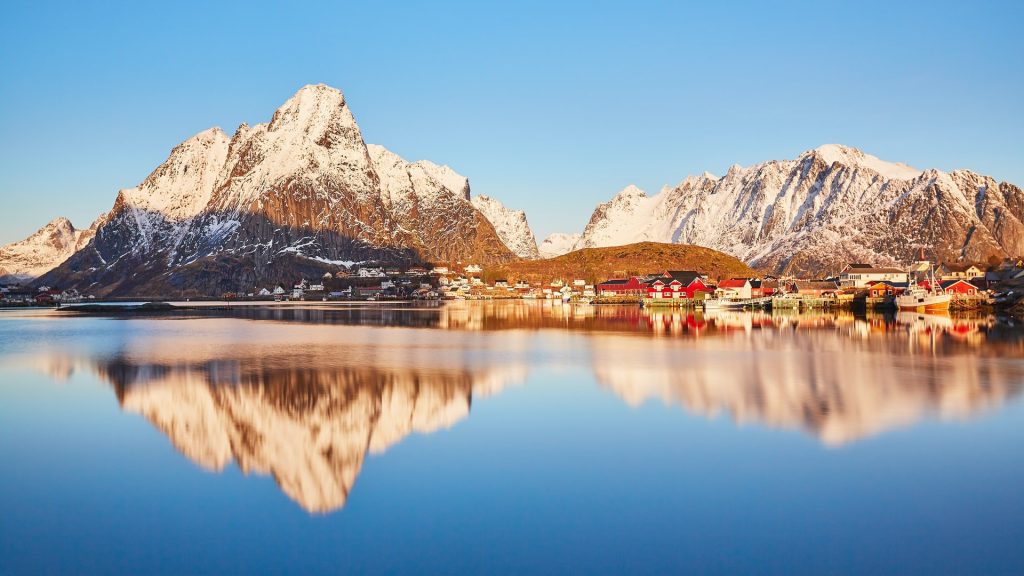
Winter Norway Guide
Eastern Norway has snowy mountains that are great for skiing, dog sledding, and snow hikes. Such places will require winter wear that is breathable and durable. Proper ski pants or winter pants will be needed along with other winter accessories like beanies, gloves, scarves, etc.
Northern Norway is for watching the Northern Lights and hence will need some stylish outerwear that has great utility as well. Thick parkas and puffer jackets provide adequate insulation in the freezing cold. Another tip would be to carry neon bands, lights, and torches as places like Tromso or Lofoten Islands get only a few amounts of daylight.
Base layers form the innermost lining of winter wear. This is why it is important that they are made from a material that is soft on the skin. The base layers make sure that your body heat is preserved while not letting any chilly winds enter. In countries of extreme cold, add a mid-layer and an outer layer for maximum comfort.
FAQs
Here are some frequently asked questions (FAQs) and answers on what to wear in winter in Norway.
What type of winter coat should I get for Norway?
A good quality, insulated, waterproof, and windproof winter coat is a must. Look for one that covers your hips and has a hood to protect against the elements.
Are snow boots necessary in Norway during winter?
Yes, snow boots with insulation and good traction are essential. They will keep your feet warm and provide stability on icy or snowy surfaces.
Do I need thermal socks in Norway’s winter?
Thermal or wool socks are highly recommended to keep your feet warm. Layering with moisture-wicking socks underneath can help keep your feet dry as well.
How should I protect my hands from the cold in Norway?
Invest in insulated and waterproof gloves or mittens. Consider wearing liner gloves underneath for added warmth.
Should I wear a hat and scarf in Norway during winter?
Yes, wearing a warm hat that covers your ears and a scarf to protect your neck and face is crucial in cold, windy conditions.
Conclusion
Norway is a land of mystical beauty that almost seems too gorgeous to be real. In order to ensure that you have the grandest holiday, it is pertinent that you carry winter wear that suits the weather of the country.
For someone like me who wants to click the most amazing pictures, it is very important that the winter wardrobe matches the aesthetic beauty of Norway. Sort your goals and priorities and pack accordingly.
In order to stay both stylish and warm in Norway, take a look at the Kosha collection of winter wear! Kosha has its physical store in Khar (west), Mumbai, and an online website. Kosha provides worldwide shipping for its customers. Check Kosha’s website here.
This winter trip, travel to the winter wonderland that is Norway and have a great time! Happy travels!
This blog article is written by Kosha Team Member – Sanika Totade.
